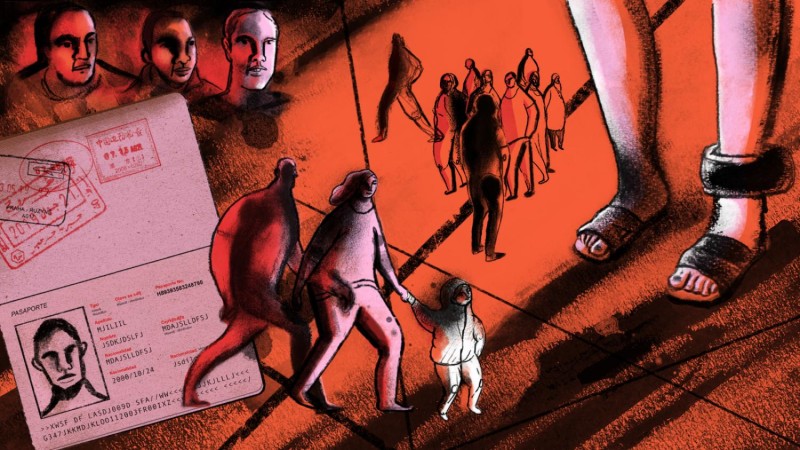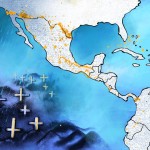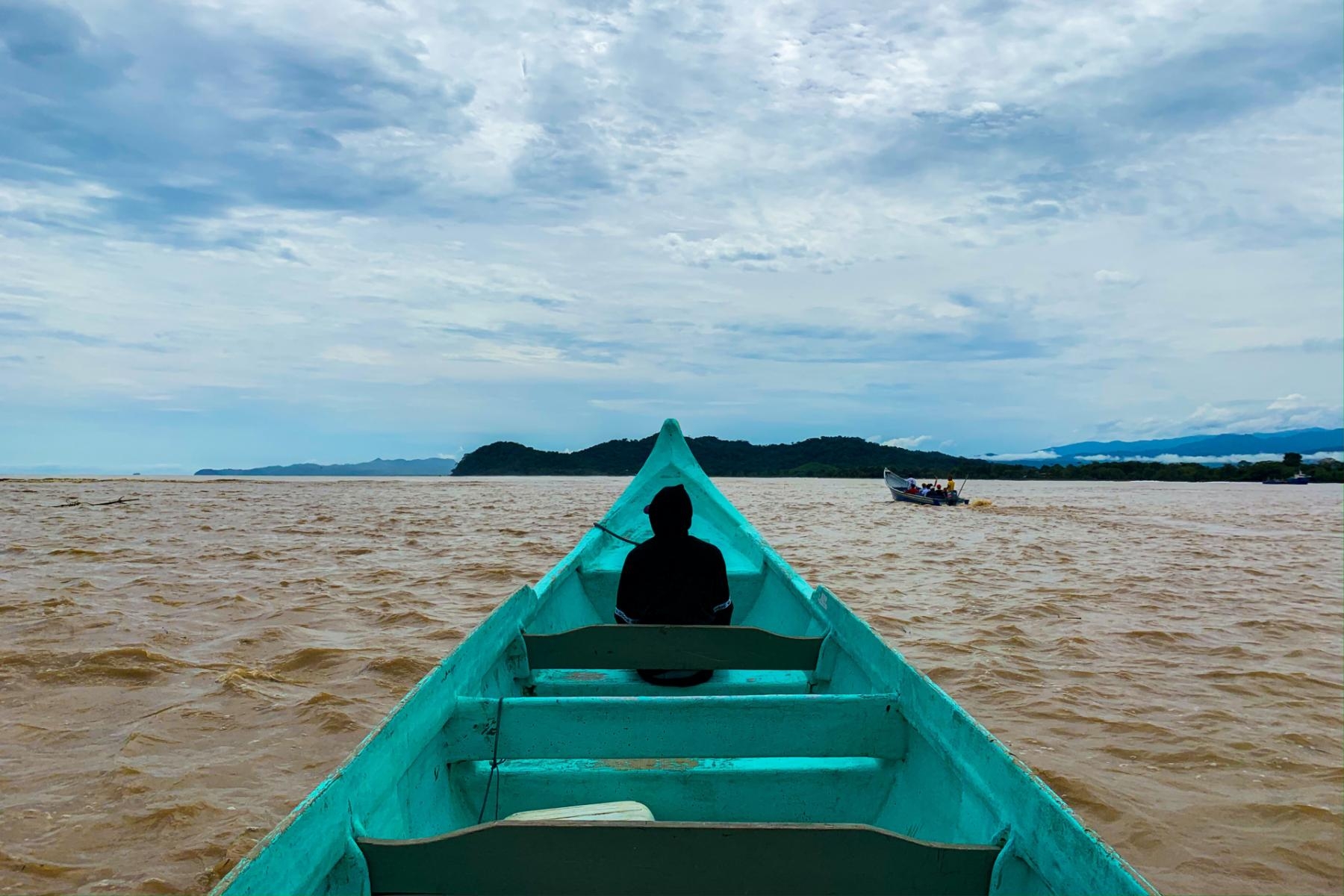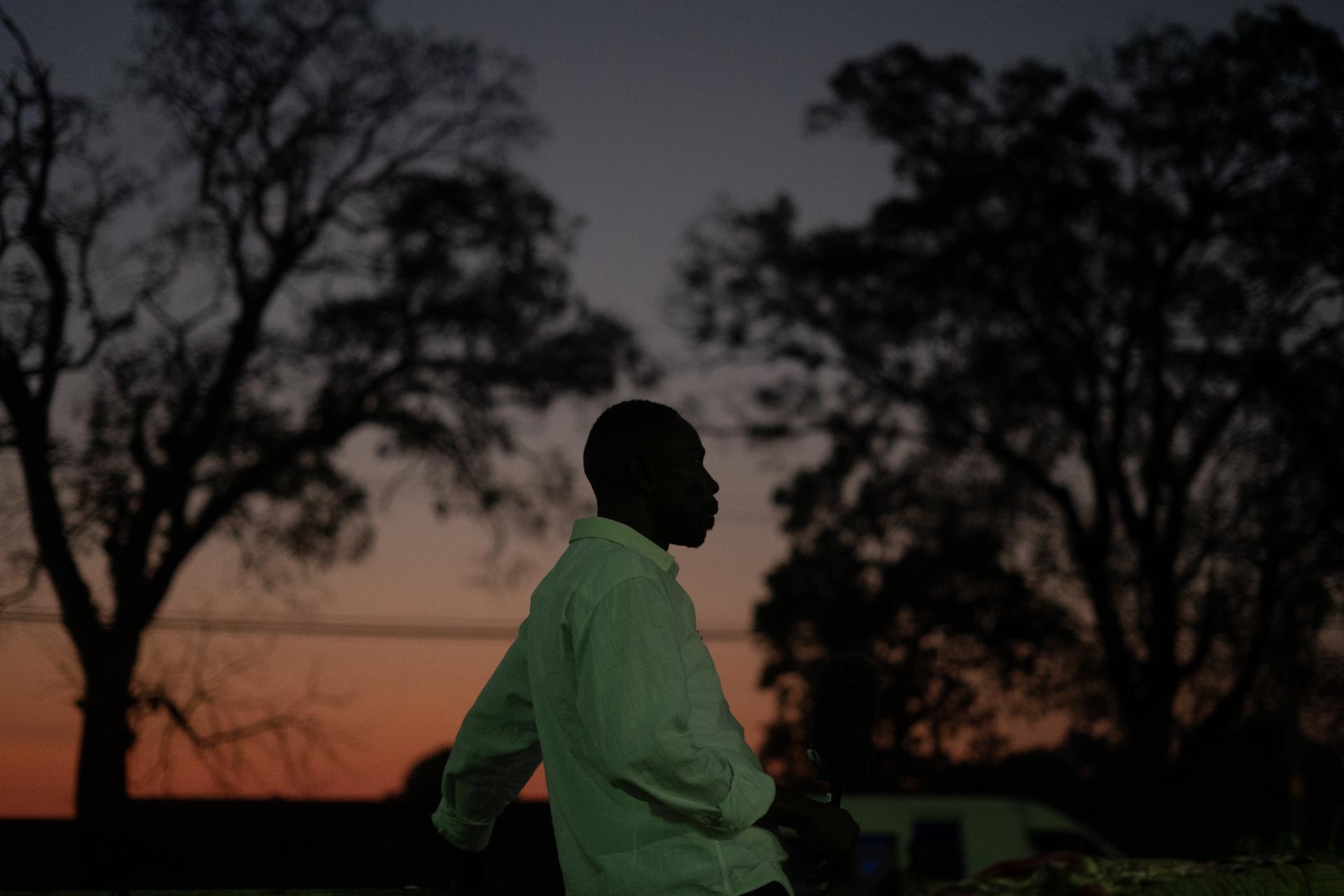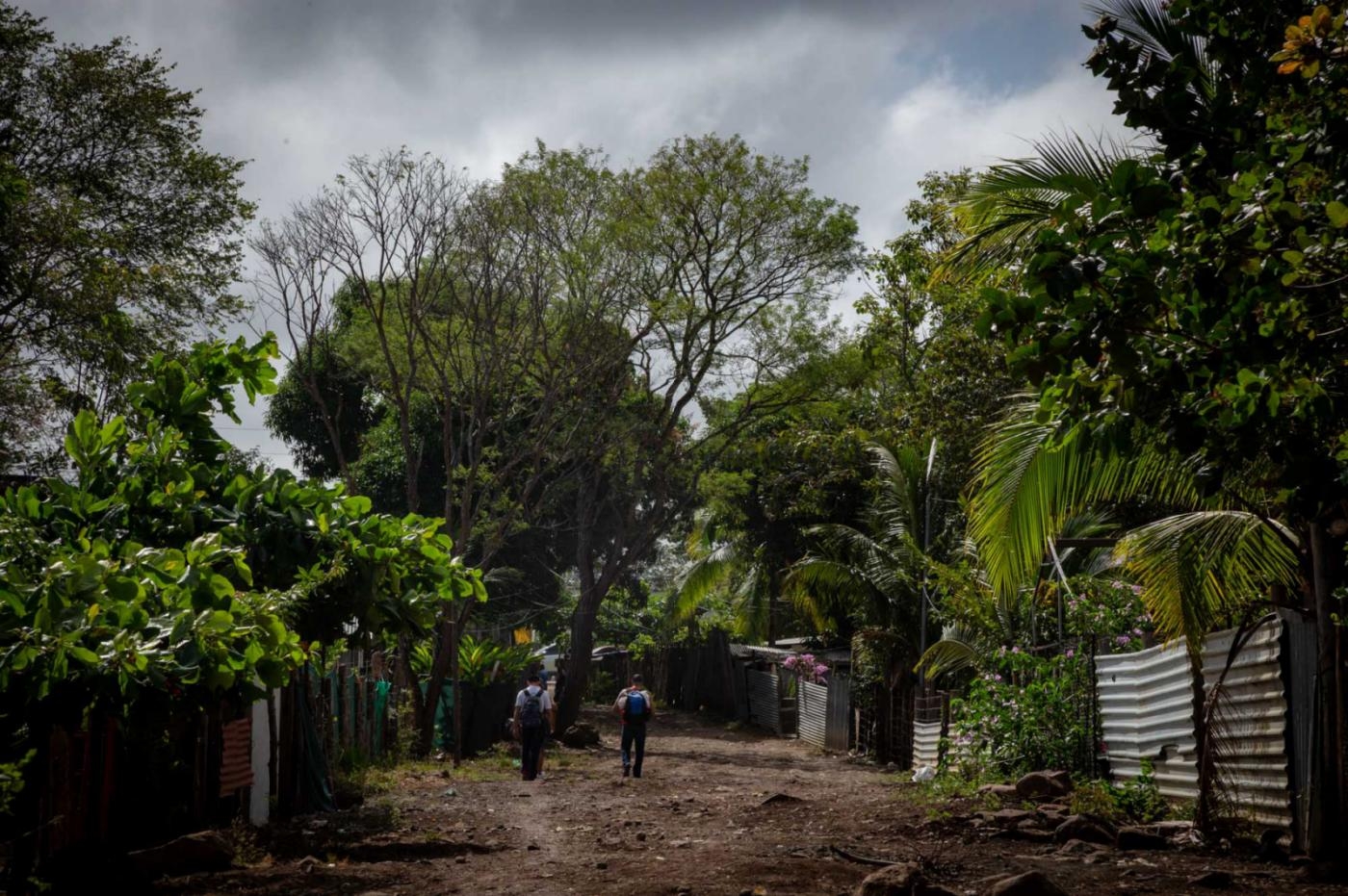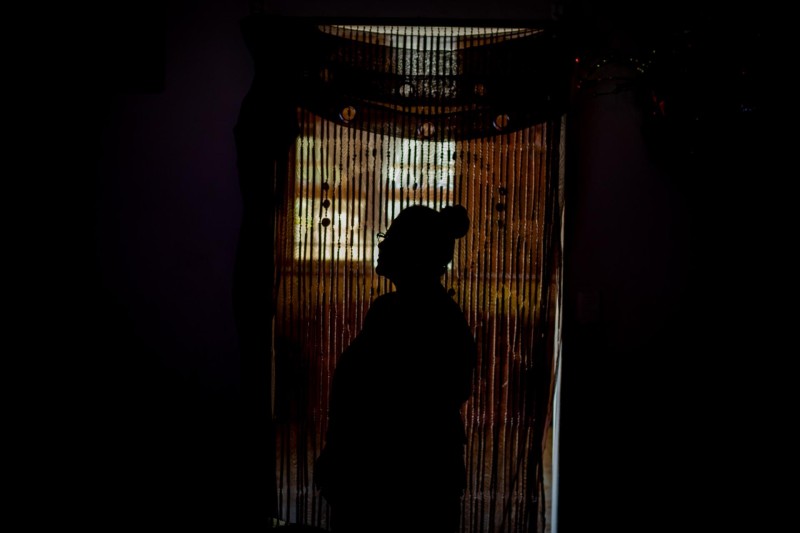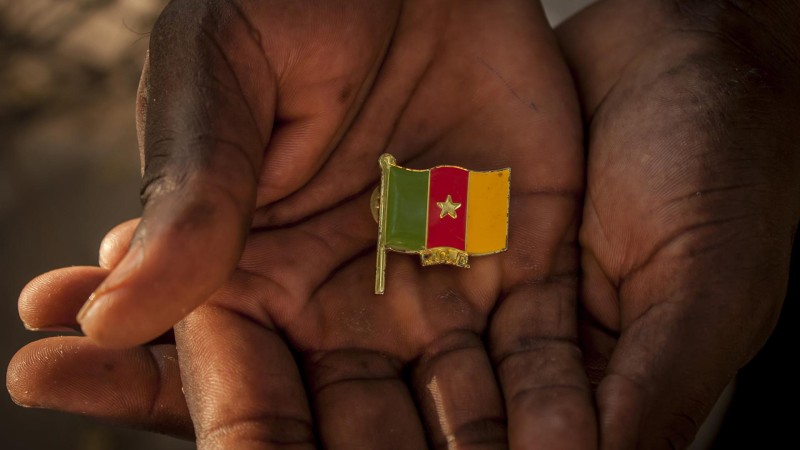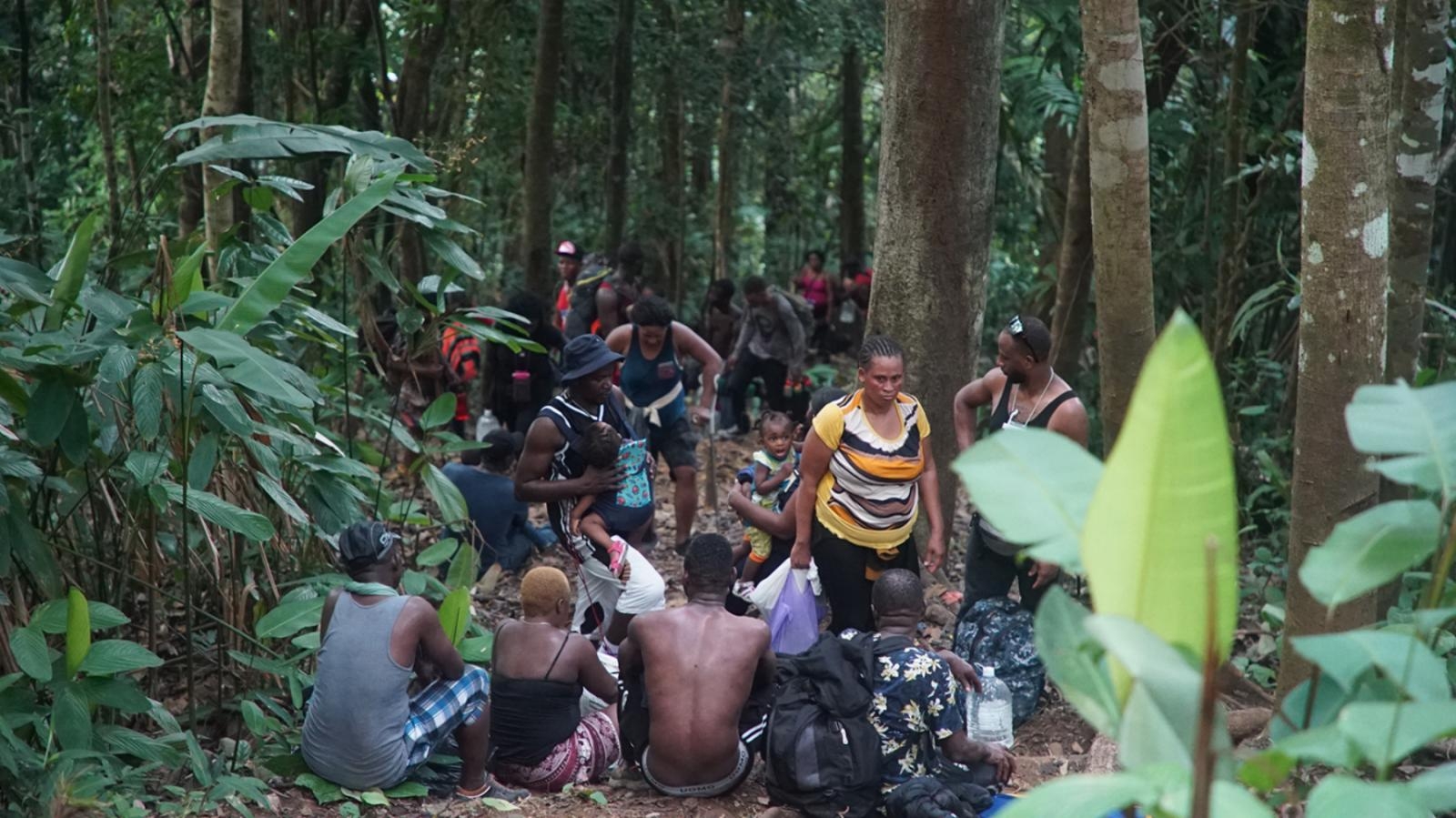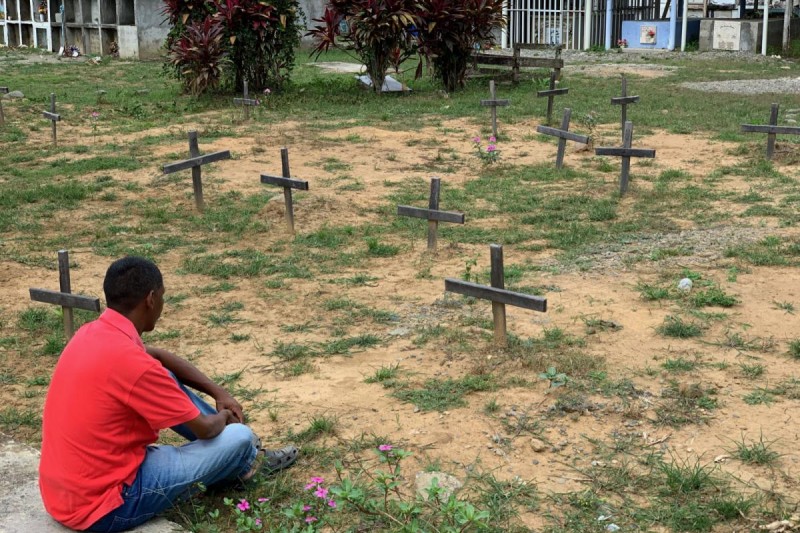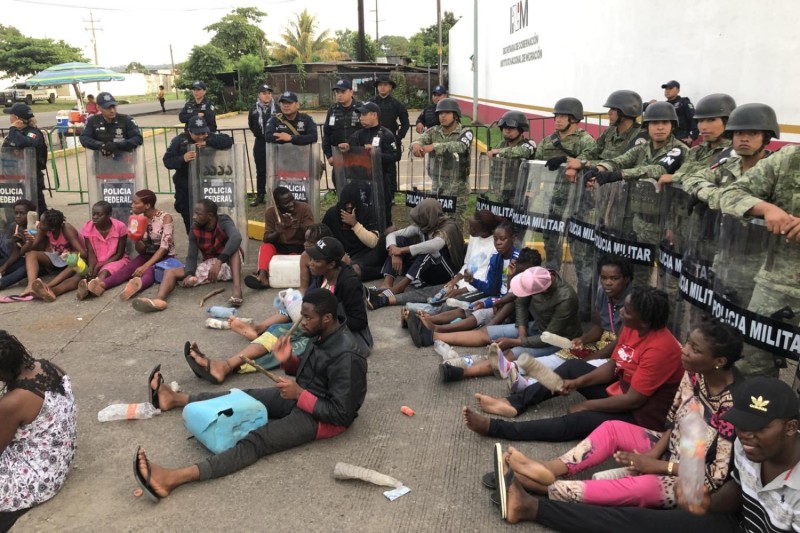It was the third DHL package that Abdifatah Hussein Ahmed sent from São Paulo to Africa that finally proved his undoing — and helped Brazil’s federal police crack open a major human smuggling network running north through Latin America.
Inside the intercepted parcel they found passport pages with five fake visas in the names of two Kenyans, two Somalis, and an Eritrean, supposedly issued by Brazilian consulates in Mozambique, Ethiopia, Zimbabwe, Saudi Arabia, and South Africa.
U.S. and Brazilian law enforcement agents allege Hussein Ahmed, a Somali citizen living in Brazil, was a “prolific” smuggler who moved scores of people from the Middle East and East Africa to the U.S. using a transnational network of criminal contacts.
One of those contacts was Abdessalem Martani, nicknamed Murad, who allegedly looked after the migrants once they arrived in Brazil. “Murad is a great smuggler,” Somali migrant Abdirizak Ali Ibrahim told police after he was arrested, describing how the Algerian got him tickets for his journey and changed his dollars for Brazilian reais. “He helps many people, for money.”
Hussein Ahmed, Martani, and another associate were arrested last year. But their ring is one of many networks that have sprung up in Brazil over the past two decades to smuggle people from Africa and Asia through Latin America into the wealthier countries to the north.
OCCRP and our Latin American partner CLIP, along with 16 media outlets from around the world, spent nine months digging into two major smuggling networks in Latin America and their international contacts. The investigation offers an unprecedented insight into the scope of their operations, from the routes they used and the local groups they worked with to the corrupt police, embassy and immigration officials, and lawyers who protected them.
It’s a profitable business. Based on official data and migrants’ accounts of how much they paid the smugglers, reporters estimate Latin America’s smuggling networks generate at least US$150 million and as much as $350 million a year — not counting payments to officials, local agents known as “coyotes,” or the border towns who rely on passing migrants.
There are human costs too. Migrants have been kidnapped in Mexico, raped in the Colombian jungle, robbed, extorted, and forced to smuggle drugs. Sometimes the price has been deadly. In one incident in January last year, 21 people, including 10 children, drowned off Capurganá, on Colombia's Caribbean coast, trying to reach Panama.
Yet the smuggling business seems to be booming. While reliable statistics are unsurprisingly hard to find, official data from Mexico, Costa Rica, and the U.S. shows the number of African and Asian migrants caught moving across Latin America has surged in recent years.
Often the smugglers exploit the divergent immigration policies across the continent to ply their trade.
Brazil
Migrants travelling through Latin America usually start their journey in the region’s largest economy, Brazil, whose relatively loose refugee laws and visa requirements, as well as good flight connections, make it a natural landing place for travellers — both legal and illegal.
International law enforcement officials say the most popular route for migrants into Latin America is the daily Ethiopian Airways flight from Addis Ababa to São Paulo, Brazil’s most populous city, where the continent’s main smuggling networks are thought to be based.
São Paulo is “the main city where these smugglers carry out their criminal activities,” said Milton Fornazari Jr., senior officer of the Federal Police in the city, which investigates the smuggling of migrants and human trafficking.
Smugglers in Brazil “are the big controllers of the route because they are the ones who charge the immigrants,” he explained. “They are the ones who get paid and eventually send money to the other partners in Central America. It is the smugglers here in São Paulo who decide when they will pay their associates.” The money flowing into São Paulo is moved to accomplices around the world through front men, small businesses, and money transfer companies.
Chief among the Brazil-based smugglers was allegedly Saifullah Al-Mamun, a Bangladeshi citizen accused of running what was thought to be the world’s largest network for smuggling migrants into the U.S. Brazilian police say he became so well known in Latin America that other smugglers along the route would contact him offering their services.
Al-Mamun’s network allegedly smuggled people from Afghanistan, Nepal, Bangladesh, India, and Pakistan. Once they arrived in São Paulo, Al-Mamun’s gang would hide them in various locations across the city. A few days later, he would fly them to Rio Branco, in the northwestern Brazilian border state of Acre, or send them there by bus. There, they’d be met by taxi drivers who had received their photos from the smugglers in São Paulo via messaging apps. These drivers would bring them to the border with Peru.
Al-Mamun’s prices varied: To travel from Bangladesh to Brazil would cost about $7,600, a price that included fake foreign ID documents, but to make it all the way to the U.S. would cost nearly double that, around $14,200.
Al-Mamun and six associates were arrested by the Brazil Federal Police in October 2019, after extensive cooperation with U.S. authorities. They are accused of smuggling people across 10 Latin American countries, moving “scores of individuals from South Asia and elsewhere, into Brazil, and ultimately to the United States.” The case against several of them is currently being heard in the Federal Court of Texas’ Southern District.
Another defendant is Moktar Hossain, a Bangladeshi national who sometimes went by "Ricky" or "Carlos," believed to have been the network’s contact in Monterrey, Mexico. He housed the migrants in a hotel and paid drivers to take them to the Rio Grande river, where they crossed into the U.S. He was arrested in Houston in November 2018 and pled guilty the following year to smuggling aliens to the United States for commercial advantage or private financial gain.
In Brazil, Al-Mamum’s network is also accused of smuggling migrants, criminal association, and laundering their smuggling profits using companies and front men. The police claim they used the identities of the migrants they smuggled to open bank accounts and firms and wire money to other traffickers — in some cases months after the migrants had been arrested in the U.S.
The smugglers allegedly received cash through banks in Brazilian border cities, especially Marechal Cândido Rondon, Cruzeiro do Oeste, and Cianorte in the state of Paraná, then distributed it to smuggling cells in other countries. One court document details 222 money transfers to people in Colombia, Costa Rica, Ecuador, Guatemala, Honduras, Mexico, Panama, and Peru.
Police say Al-Mamun also used a currency exchange agreement between his travel agency and financial services company OM Distribuidora de Títulos e Valores Mobiliários to wire money to contacts along the smuggling route. Distribuidora de Títulos e Valores Mobiliários cancelled the contract, however, after discovering he was using other people’s names to make the transactions.
Brazilian authorities have blocked bank accounts belonging to the group, but, said Fornazari, “we haven’t yet been able to identify all the assets, given the extreme professionalism of the money laundering cell.”
Corruption
Al-Mamun’s network allegedly operated using fake documents with the help of corrupt officials who gave them a veneer of legitimacy.
A Brazilian lawyer was arrested alongside the supposed kingpin in October for processing fraudulent refugee applications, often using the name of immigrants who were not even in Brazil. Brazilian police say Al-Mamun also recruited a staff member from the Ecuadorian consulate in São Paulo to put fake stamps on passports.
Despite being under investigation in Brazil, that staffer remained on the payroll of Ecuador’s Ministry of Foreign Relations until January of this year. The Ecuadorian Foreign Ministry did not respond to requests for comment on this story.
Al-Mamun also allegedly used false Brazilian foreign residency cards to get Venezuelan visas in migrants’ passports, which he then mailed to South Asia so that migrants could fly into Venezuela and enter Brazil across the land border. Police say the network even recycled the fake documents and sent them back to South Asia to be used again by new migrants.
Seamen’s Books
International intelligence sources said smuggling cases in Latin America mostly do not involve high-ranking officials.
But the case of Felix Salcedo Baldión shows that, at least sometimes, corruption reaches higher up the ranks. The former Colombian senator was arrested in 2018 accused of trafficking migrants and forging documents. According to local media, he issued fraudulent invitation letters to obtain visas from the Colombian consulate in the Dominican Republic, mostly for Indian migrants.
Colombian police investigated five other people for being part of the ring, including a former Colombian consul in the Dominican Republic, Eliana Serrada Bautista — though a judge declined to hear her case as she had diplomatic immunity — and Ecuadorian José Guamán Miranda, the alleged leader of the group.
In one wiretapped call, Salcedo told Guamán, who fled prosecution, that he suspected the police were on his trail.
“I can’t send any more letters,” he warned. “They passed me a tip from a friend I have there in the ministry... I don’t know what happened, but my name is squeaking around there. I don’t want to have any problems.”
In total, police records show Salcedo sent and received 73 transactions worth a total of 12,087,540 Colombian pesos (about $4,300 in March 2018).
In April 2019, Colombia’s 21st Circuit Criminal Court sentenced Salcedo to 62 months in prison for migrant trafficking. He could not be reached for comment.
Mama Africa
On the ground, migrants move across Latin America through a network of local contacts who smuggle them across borders by air, land, and sea.
Several of those contacts go by “Mama Africa,” a nickname given to women who either work for the smuggling networks or simply shelter migrants and offer them food and assistance, depending on who you ask.
Migrants interviewed in the U.S. as part of the probe into the network run by Hussein Ahmed said their main contact in Costa Rica went by this moniker. A woman known as “Mama Africa” — Ana Yansy López Martínez — was arrested in Costa Rica last year on charges of people smuggling (see box for more details). Another “Mama” was arrested in Colombia, near the border, for people smuggling as well.
In Mexico, near the migrant station in the southwestern city of Tapachula, travellers said another Guatemalan “Mama Africa” offers lunches at low prices to migrants, sometimes featuring African food, and lets them leave messages on a board for those who follow them.
“Mama Africa” of Central America
These women are allegedly one link in smuggling networks which move thousands of people from Asia and Africa across Latin America every year.
Official statistics from Costa Rica and Mexico indicate around 13,000 of these migrants made the journey through these two countries in 2019; calculations based on US immigration statistics show as many as 24,000 reached the US in 2018. Based on this data, and interviews with migrants and other sources, reporters estimated the smuggling networks generate a minimum of $150 million and as much as $350 million annually.
But these figures are likely substantial underestimates. They don’t include payments to so-called “coyotes” and other local guides, nor payments to obtain official permits. They also don’t account for the smuggling money that flows through legitimate channels such as banks, travel agencies and remittance companies, or border towns like Capurganá in Colombia, whose entire economies revolve around selling migrants transport, lodging, and food.
Guatemalan authorities have calculated that one other group operating in Guatemala, run by Peruvian Luis Leonardo Mejía Pasapera, received 30,395,318 quetzals (around $4 million at the time) between 2009 and 2016 for smuggling African and Asian migrants, who arrived from Brazil, to the United States through Colombia, Panama, Costa Rica, Nicaragua, Honduras, Guatemala, and Mexico. The smugglers were charging African and Asian migrants between $7,000 and $25,000 each to be taken to the U.S. via Dubai and Brazil.
Mejía’s group allegedly charged migrants between $1,750 and $2,200 to be brought from Panama to Mexico, according to Honduran police wiretaps. The only exception was Indians, who one smuggler said “are not taken by anyone for less than $10,000” on the route from Honduras to the U.S, because they are thought to be wealthier than people of other nationalities.
The group is also accused of recruiting Honduran immigration officials at the Choluteca station who pretended to detain the immigrants and then transported them on their own to Tegucigalpa for 1,500 lempiras per person (about $65 in 2016).
One was an immigration official in Tegucigalpa named Jorge Ernesto Sierra Landa, or Lieutenant Sierra. A Honduran police report said he was nicknamed “20 per head” because he allegedly charged each migrant $20 for an under-the-table Honduran exit permit, with delivery in a speedy six hours or less.
Sierra was dismissed from the Honduran National Institute of Migration in early 2016 as authorities were investigating him. A spokesperson for Honduras' Attorney General's office said Sierra was never charged because of a lack of evidence against him.
A lawyer for Mejía, who is now in prison in Guatemala awaiting trial, declined to comment.
One intercepted call indicates the gang had a contact in the Casa del Migrante migrant shelter in Guatemala City, which is part of a network of such shelters in Mexico and Guatemala started by missionaries. The gang allegedly paid him $5 for each migrant taken in without being logged, so they could move through the city without leaving a paper trail.
La Casa del Migrante’s administrator in Guatemala City, Carlos López, said they accepted migrants from immigration authorities for a few months, but stopped because they suspected the new arrivals were being smuggled. He insisted no one from Casa del Migrante had ever been paid by smugglers.
"We were being used by those networks, which are entrenched in the immigration authorities. We decided to tell them we could not do it anymore," he said.
"A couple of years ago, several people showed up asking if they could pay us to take care of immigrants, but we told them that we could not enter into negotiations of that kind because we would become supporters of those networks. Nobody here was paid or bribed.”
‘Mafia of Thieves’
For migrants caught in these networks, life is fraught with danger.
One of the most perilous routes through Latin America takes migrants through the jungles between Colombia and Panama, a break in the Pan American highway known as the Darién Gap. Some migrants cross part of it in boats, while others walk the whole way through the jungle on foot for days — a grueling journey that has cost at least 94 lives since 2016, according to police figures, media reports and interviews collated by journalists.
Watch this video to learn more about the dangerous journey through the Darién Gap.

Cameroonian migrant Samuel Eyong Beyong, who crossed the gap on foot with his pregnant wife and two small children earlier this year, described the journey as “complete death.”
“I was robbed,” he told reporters in February in Choluteca, Honduras, accusing the smugglers of stealing $1,200 from him. “They are a mafia of thieves. ... They stripped everyone naked to find the money.”
But, he said, he had heard other smugglers were worse. “We were lucky in that jungle because they only took the money,” he said. “In some other groups, they raped the girls and even shot someone.”
In January last year, several members of a family from the Democratic Republic of Congo died trying to cross the Darién Gap when drunk smugglers forced them into a boat in the middle of the night with no life jackets. The boat capsized, drowning the father, Vita Mbengo, and three of the family’s young children. Panama border forces said only the mother and one daughter survived.
Since then, smuggling along the route seems to have slowed. “The groups dedicated to assaulting people are either more careful now or have reduced this illegal activity,” said an officer of the Ombudsman’s Office in the Colombian Darién, speaking on condition of anonymity due to fears for his personal safety, since multiple paramilitary groups operate in the region.
He said the Autodefensas Gaitanistas de Colombia, a paramilitary group that is also considered Colombia’s largest criminal organization, which allegedly controls most of the country’s drug trade, distributed pamphlets last year in Capurganá, a town along the migrant route, warning anyone “who attempts to attack migrants, robs them or rapes their women, will be killed.”
Several sources said the Autodefensas Gaitanistas, also known as the Gulf Clan, gave a local community association the responsibility for taking migrants through the Gap to Panama and authorized them to charge them $70 per head.
Other organized crime groups along the route do much less to protect the migrants.
On the U.S.-Mexico border, Brazilian police say there is an “epidemic of kidnapping of migrants by the Mexican cartels, with many of them dying during the journey.”
Yemeni immigrant Mohamed Salah Ali Salah, told the U.S. authorities that arrested and questioned him in 2018 that he and other migrants were abused in Mexico. First, he said, the police in Reynosa arrested him, beat him and demanded money. Then they were turned over to a local organized crime group, which demanded $2,000 to take them to McAllen, Texas; then another $2,000 to get them to Houston; and $3,000 more to go to Canada.
Tonatiuh Guillén Lopez, a former commissioner of Mexico’s National Institute of Migration (INM), acknowledged that some immigration officials help the smugglers. In the seven months of his tenure, before he resigned in June 2019 amid a migrant crisis that saw troops sent to the borders, he said nearly 500 INM officials were dismissed from their posts.
Tapachula, near Mexico’s border with Guatemala, is a hub of operations for local traffickers. One Cuban migrant interviewed at a local hotel showed reporters a counterfeit resident card bought there for $500, though its poor quality made it unlikely it could allow him through the checkpoints installed outside the municipality.
But stepping on U.S. soil offers no guarantees of safety, not only because of the likelihood of being stopped by border patrol forces, but also because of the physical danger people face if they are abandoned by “coyotes” in the desert.
In June 2019, a 6-year-old girl from India, Gurupreet Kaur, died of heatstroke in the Arizona desert after coyotes dropped her and others in a remote area in the middle of summer, when temperatures were as high as 42 degrees Celsius (over 107 degrees Fahrenheit).
Gurupreet, originally from the village of Hasanpur in northern India, was trying to reach her father, who had been living in New York for some years after claiming asylum in the U.S.
Instead, she died in the desert of southern Arizona while her mother was trying to find water.
Inspector Fornazari, from São Paulo, said he finds the callousness of smugglers to be shocking.
“What surprised us most was the greed, the irresponsibility of these traffickers who really care little about these people’s lives,” he said. “We heard phone calls from members of the criminal organization making fun of the people who died on the way.”
Additional reporting by Estevan Muniz, Suchit Chávez, José Guarnizo, Juan Antonio Gómez, Alberto Pradilla, Deepak Adhikari, Ushinor Majumdar, Manno Wangnao, Sebastián Ortega, Noelia Esquivel Solano, Mary Trini Zea, Paul Mena, and Giancarlo Fiorella.
